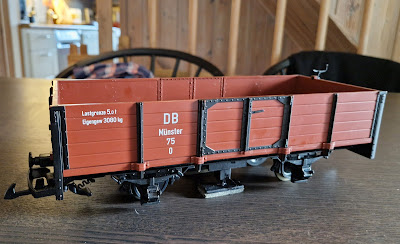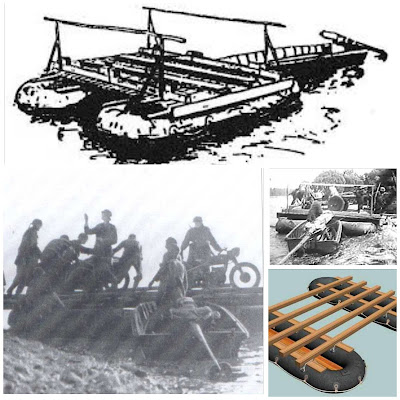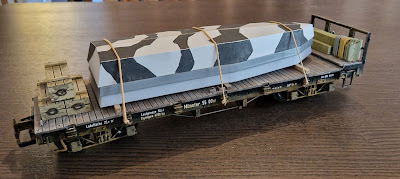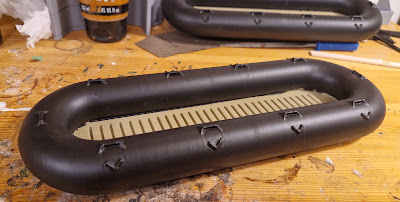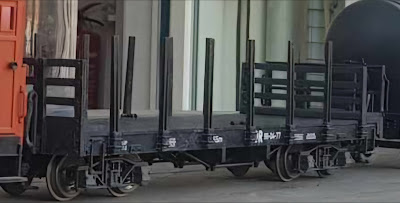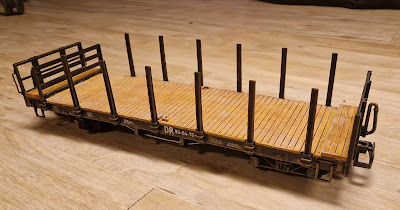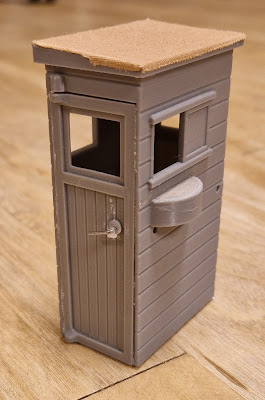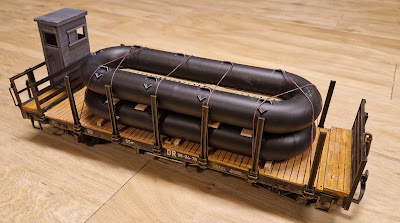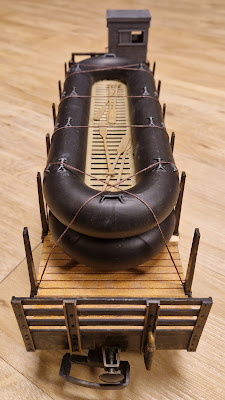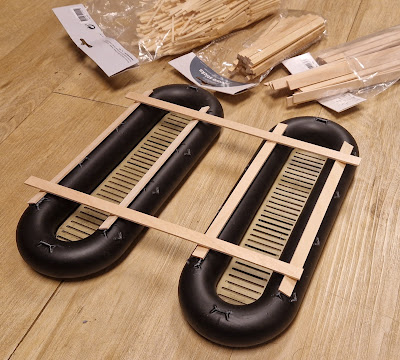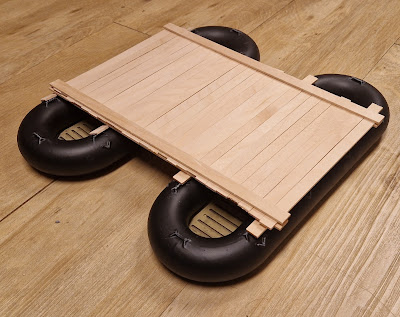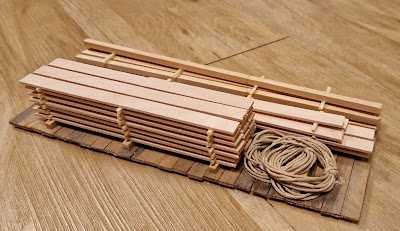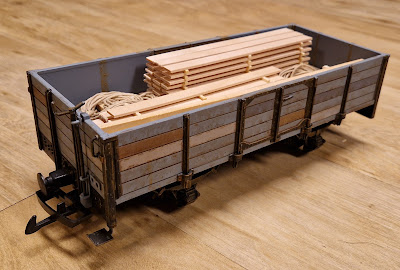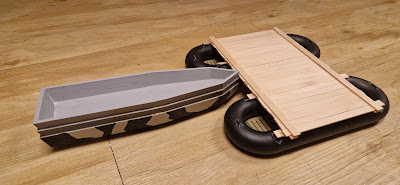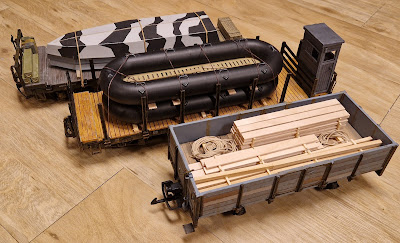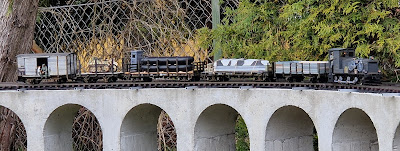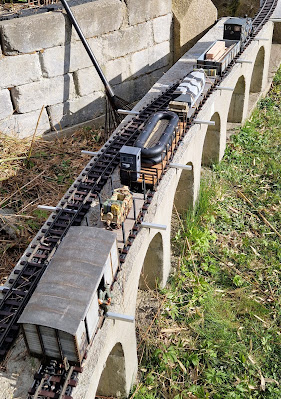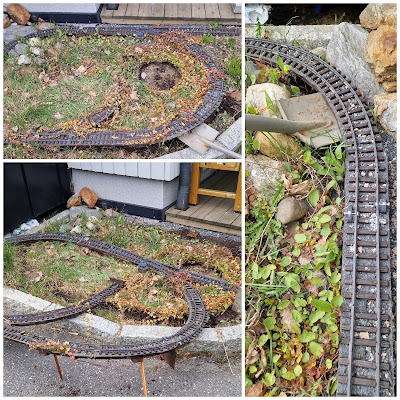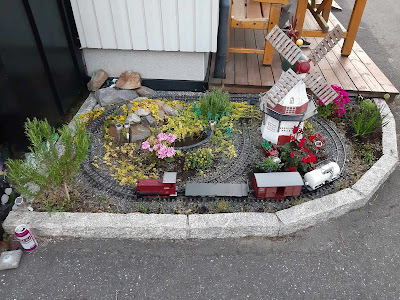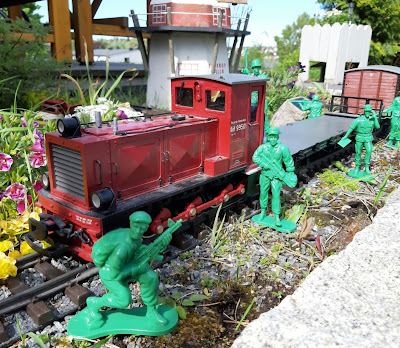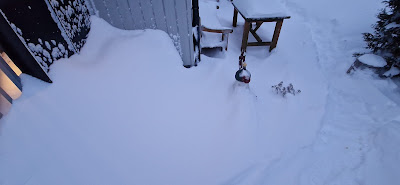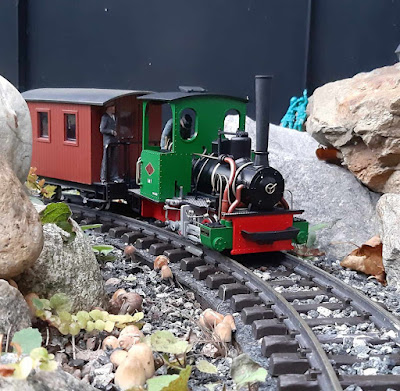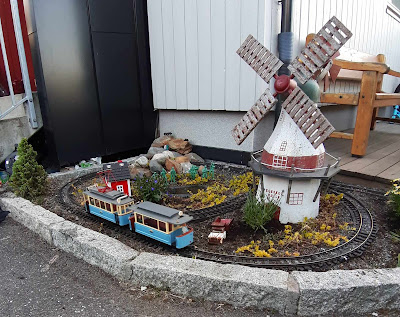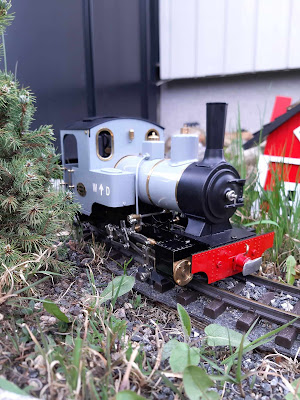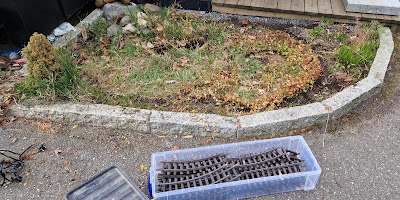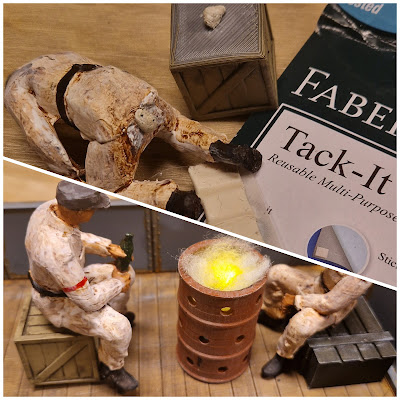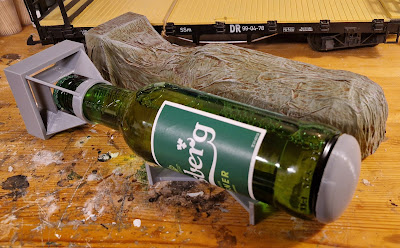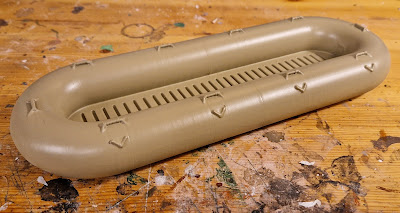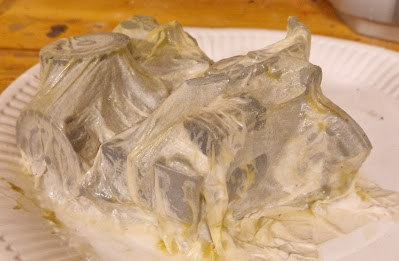This modelling project did not actually start with a boat or ferry model, but with a railway wagon. It seems like 'Murphy's Law of Combat' also strikes when coming to modelling military railways. The LGB starter set I used for making my Heeresfeldbahn was originally a starter set for a German narrow gauge railway from the Frisian island of Wangerooge. It was a nice livery, but it didn't seem that LGB had much other rollingstock from that island railway except for those in the starter set itself. So the decision to repaint it and make it into a Heeresfeldbahn was easy. During a weekend trip to the German town of Kiel last autumn, I visited a small model railway shop there; Scharly's Lokshop. It deals mainly with second hand items, and in the shop I saw a very beautiful LGB model of an open goods-wagon from, off course, Wangerooge (!). If I'd knew that LGB had made more models from this particular railway, I would have considered not to convert the starter set in the first place. -But that was just too late now, so I ended up buying the Wangerooge-wagon anyway, just to repaint it grey so it would fit the rest of my 'ex Wangerooge Heeresfeldbahn-livery'.
The Prototype
Since it was an open wagon, it would improve the look if some load could be added to it.While I was searching for paint-schemes and information about the Sturmboot 39 in connection with modelling them as a load for my G-scale Heeresfeldbahn, I discovered that these Sturmboots also were used to power German military pioner ferries - Flosssackfähre, which were made up of a couple of large inflatable rubber dinghies - Grosser Flosssack 34, with wooden beams and deck between them. They could carry infantry, motorcycles and small PKWs.
 |
| Boxart from Dragons very nice kit of such a ferry. Too bad for me it's only made to 1:35 scale, as I needed one in 1:19 scale |
The Model
I made the Sturmboot 39 originally as a homage for my son who had recently done his service in the Norwegian Coast Guard, where he was operating fast patrol boats.Now he is studying to become a 'First Mate', and last summer he took a summer-job as a 'Mariner' at a ferry in Northern Norway to finance his studies. This inspired me to make those Sturmboot 39s into the propelling part of a (pioner-) ferry; a 'Flosssackfähre' by adding the rubber dinghies and wooden beams and decking as train loads in my new wagon.
I found a free STL-file of a Grosser Flosssack 34 at Wargaming3d, which I resized to 1:19 scale. The process form 3D-printer til ready for painting can be seen in the April Workbench update. Since the originals are made in rubber, I decided to use the real thing and cote mine with black rubber as well. I used some black plasticote spray found at a car accessories shop. This worked very well to cover the layer lines in the print too (which were printed in a medium resolution).
Now I found out that this wouldn't fit the ex-Wangerooge wagon after all, so I purchased another flat-wagon of the same type as was in my LGB starter set and I used for the Sturmboot 39s in the first place, to use for the 2 newly printed Flosssack 34s.
Since it was looking the same (all black) I painted it slightly different...
Bringing the painted flatcar, brakeman's cabin and the 2 Grosser Flosssack 34s together:
Then I could use the ex-Wangerooge wagon for the wooden beams and decking needed to make the ferry complete. First I had to mock up the ferry it self so I knew how many pieces of wood and in which lengths was needed to be cut to complete it...
Together with my earlier 'Sturmoot 39', the 2 rubber dinghies and the wooden beams and decking makes up a complete Flosssacfähre.
When the complete German military pioner ferry of the Flosssachfähre-type are loaded onto railaway wagons it looks like this:
And loaded on the train 'the ferry' doesn't look so much like a ferry anymore (unless you've seen the prototype). But it shows that's possible to model a large scale car ferry and load it onto a narrow gauge train in a prototypical way.
First run on a 'day out' (in a friend's garden as my own garden railway is temporary out of service) transporting a group of Sturmpioneren:
This 'military load doesn't look so offensive, neither does any of my other loads on my Heeresfeldbahn. Initially I optet for more offensive loads like armoured cars and fighting vehicles, but I've not seen pictures of such so I think my loads seems credible for a narrow gauge railway.

